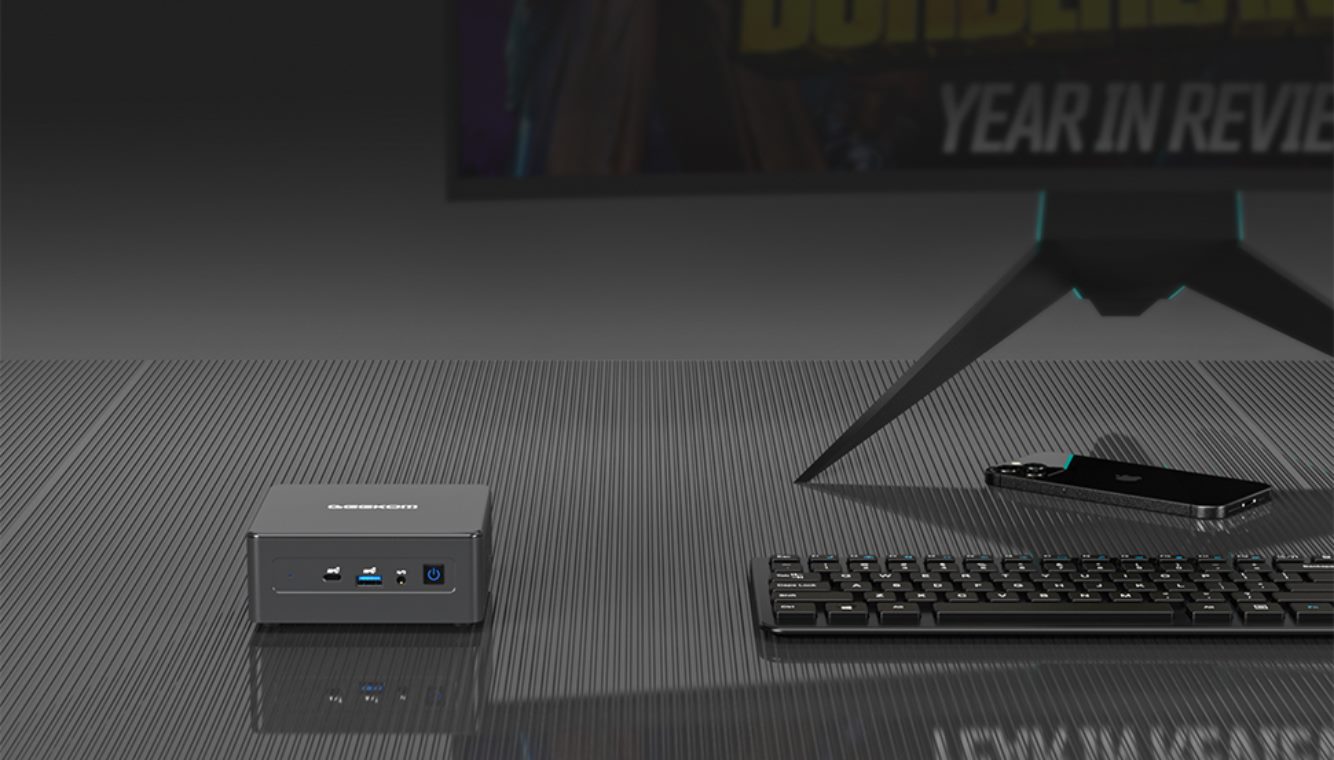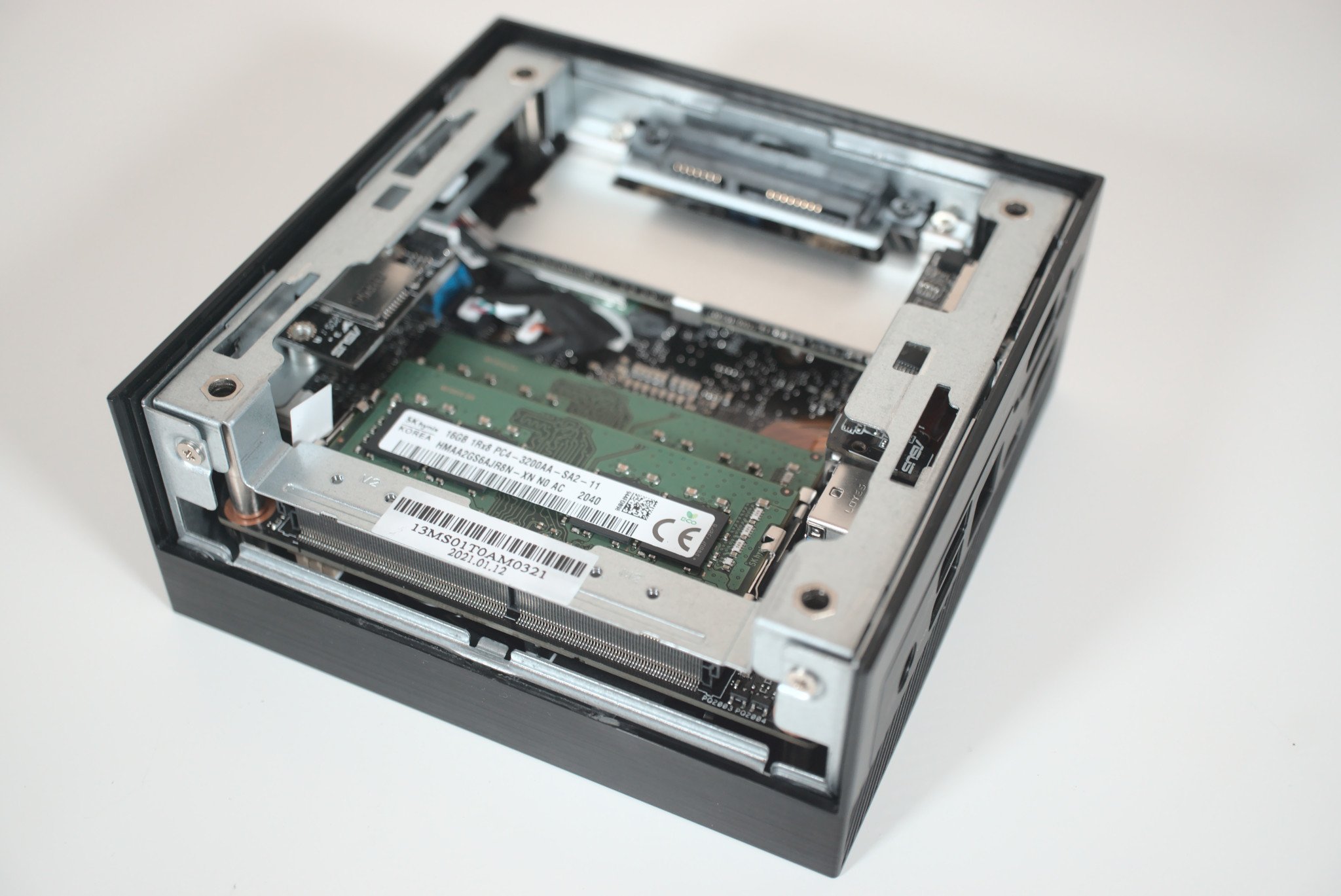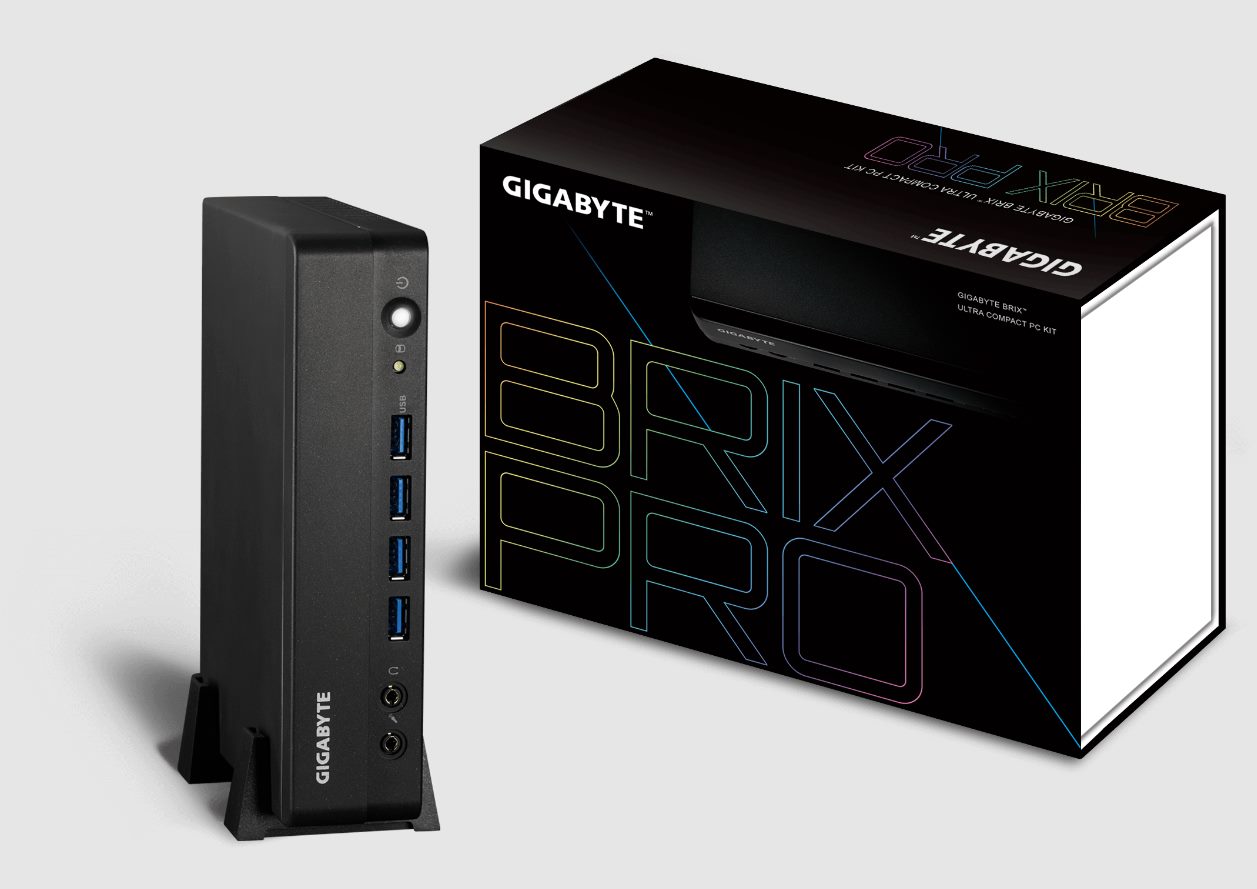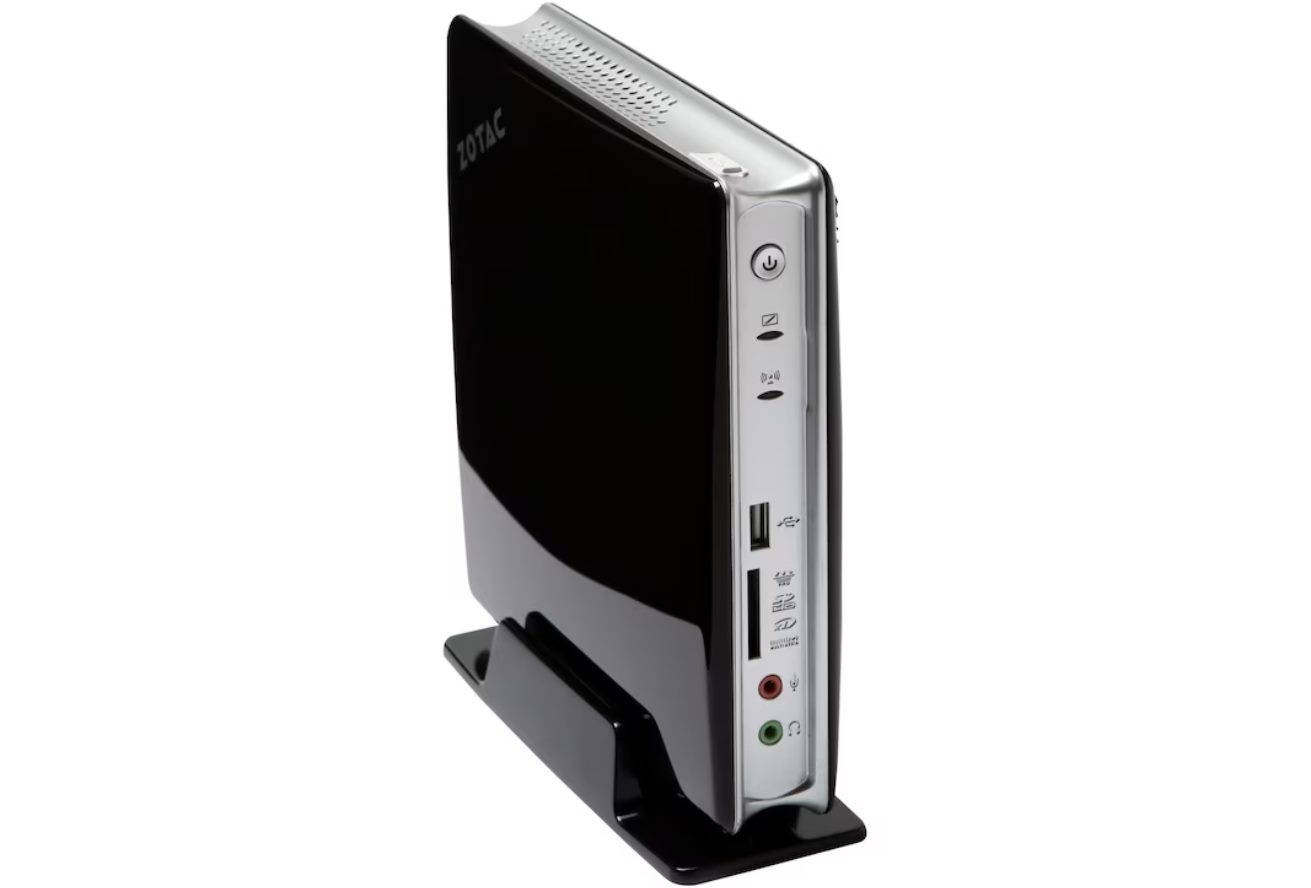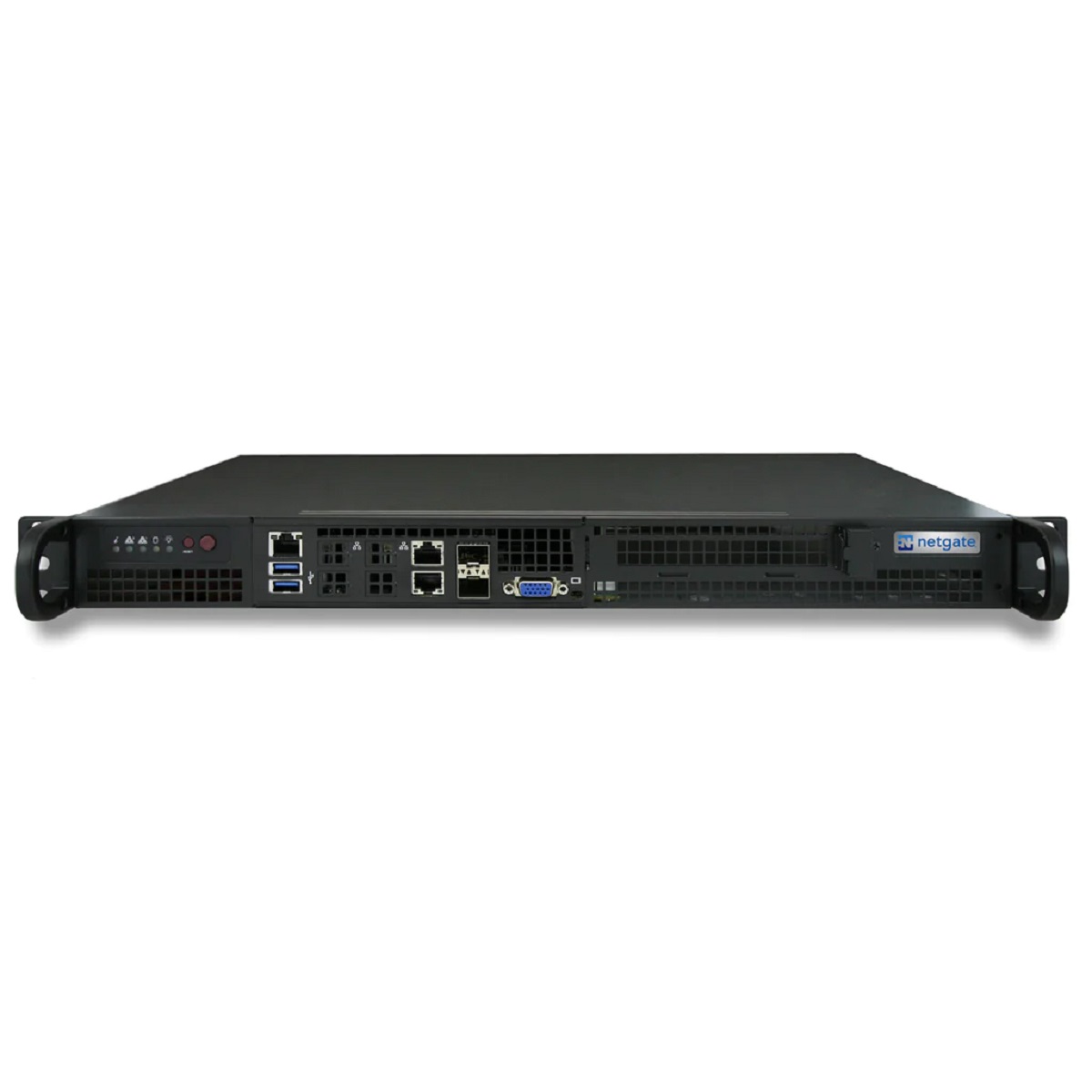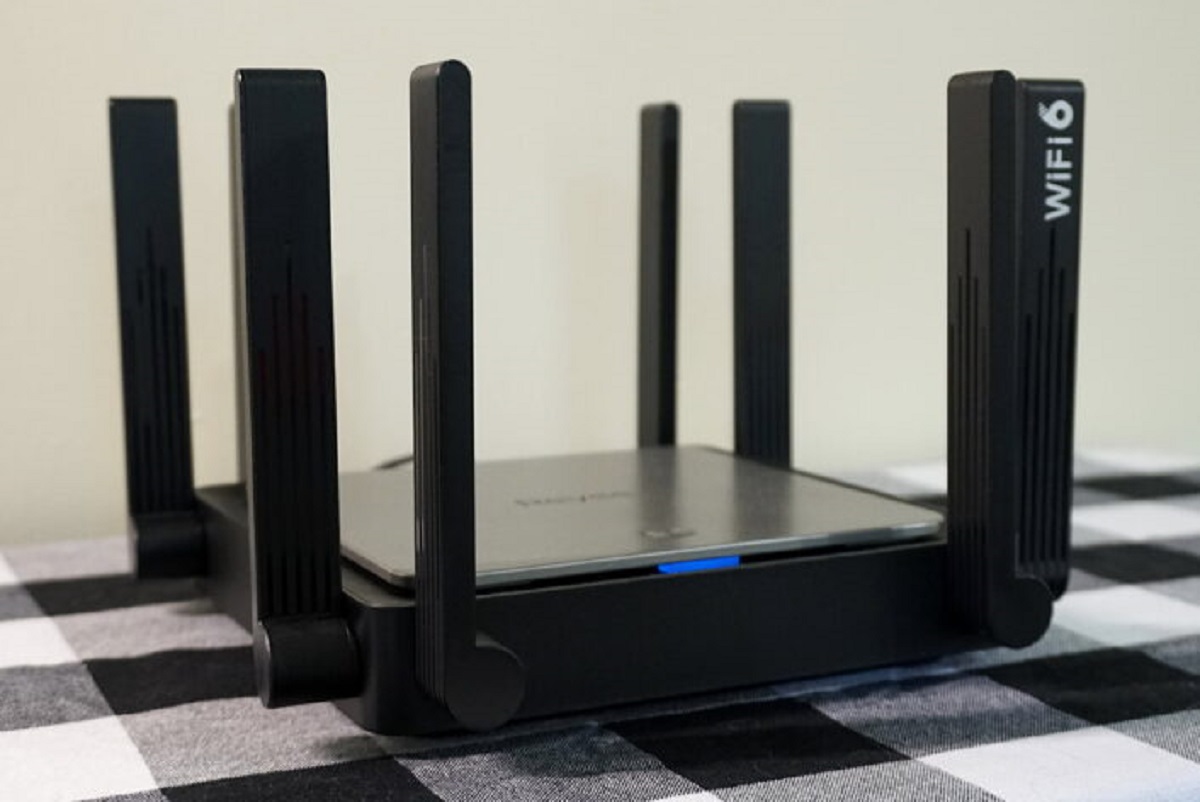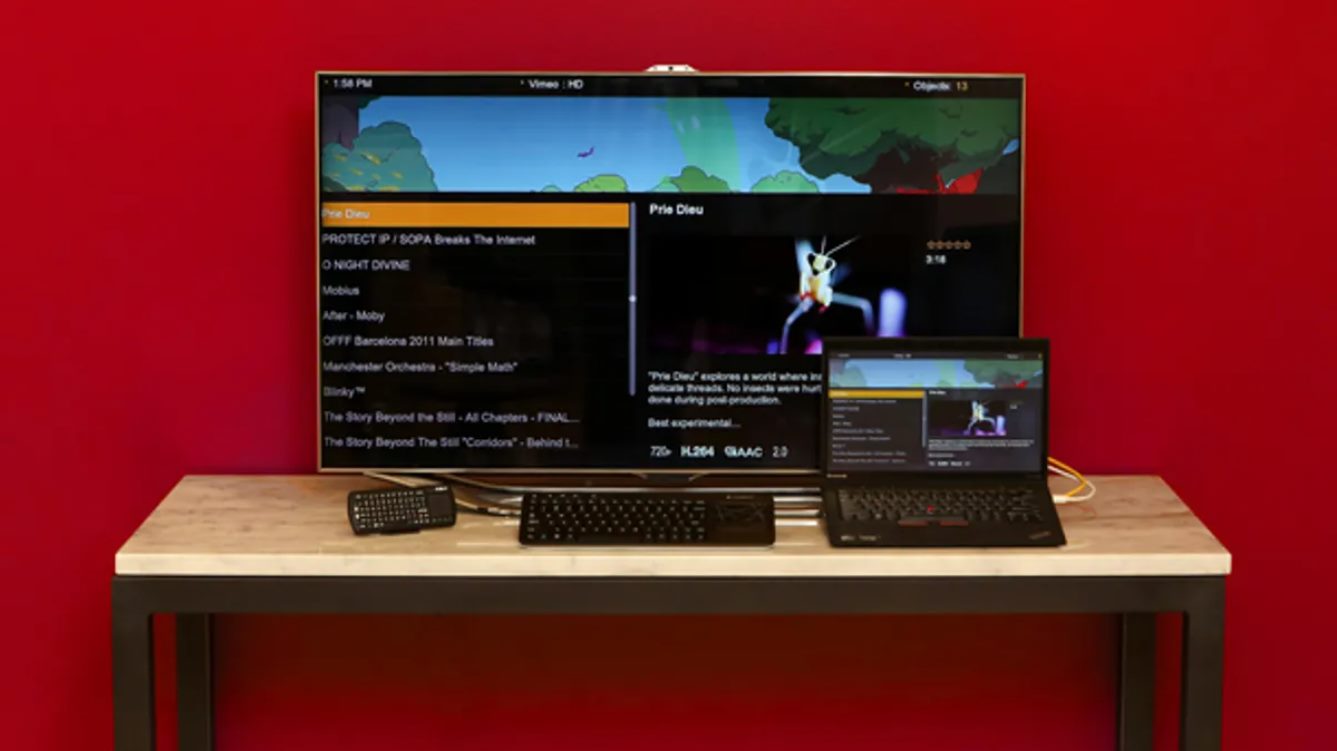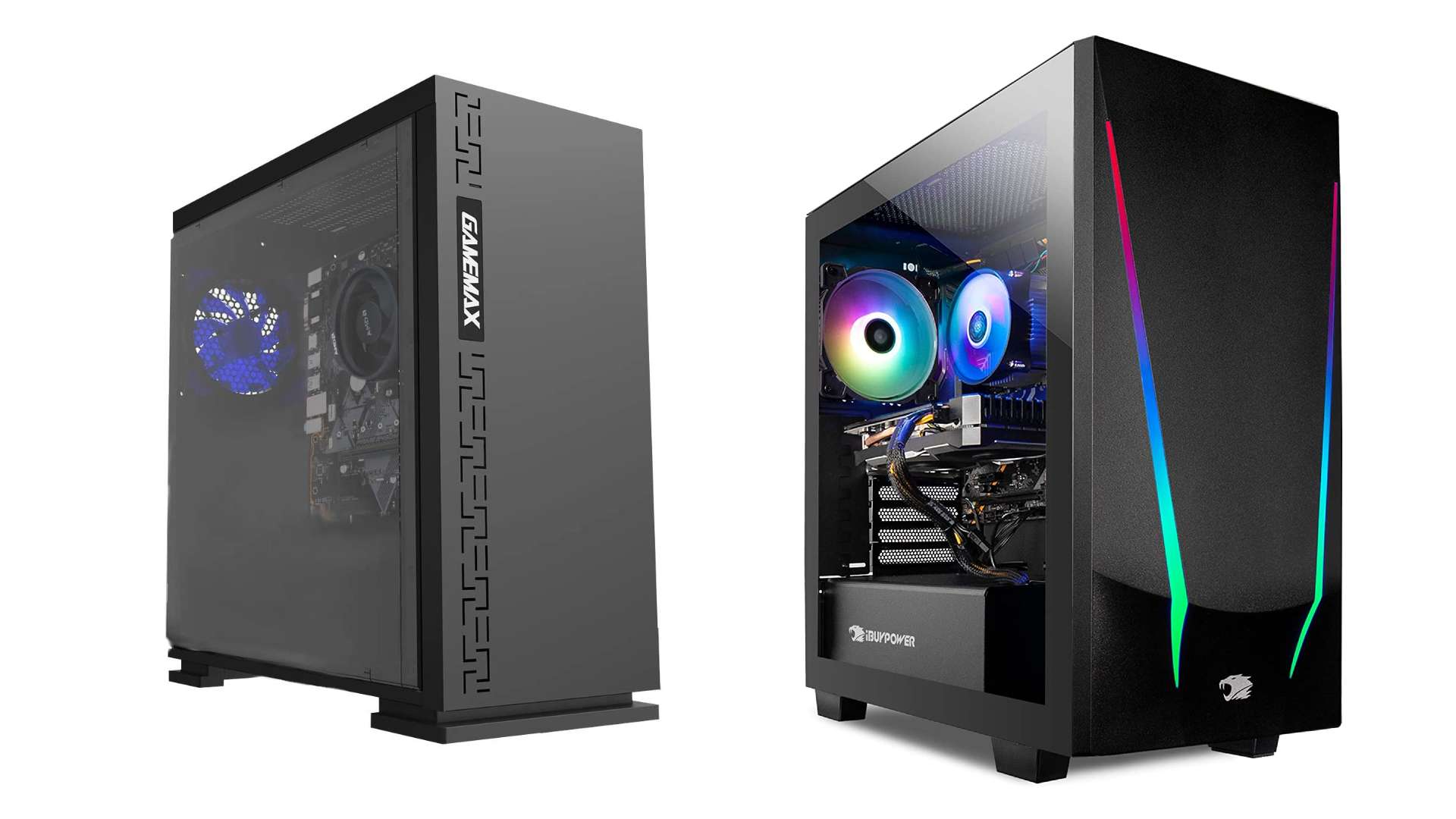Introduction
Welcome to the world of barebones mini PCs! These compact machines offer a great alternative for those who value space-saving designs and customizable options. Whether you’re a tech enthusiast or someone looking to upgrade their current system, understanding what you need to buy for a barebones mini PC is essential.
A barebones mini PC is essentially a bare framework that requires additional components to function as a complete computer system. While it may sound daunting, building a barebones mini PC allows for a personalized and cost-effective approach to computing. However, it’s important to know exactly what components you’ll need to purchase to turn this barebones unit into a fully functional mini PC.
In this guide, we’ll explore the essential components you’ll need to buy to transform your barebones mini PC into a powerful computing device. From the operating system to peripherals, we’ll dive into each component, providing you with a comprehensive understanding of what’s required.
Keep in mind that the specific requirements and compatibility will vary depending on the barebones mini PC model you choose. It’s crucial to research and ensure that the components you purchase are compatible with your chosen barebones system.
Let’s dive in and explore the key components you’ll need to buy for your barebones mini PC!
Operating System
Before you start building your barebones mini PC, you’ll need to decide on an operating system (OS) to power your machine. The operating system is the software that manages the hardware and software resources of your computer and allows you to interact with it.
When it comes to choosing an operating system, there are several options available:
- Windows: Microsoft Windows is the most widely used operating system worldwide. It offers a user-friendly interface, a vast array of software compatibility, and extensive support. Windows 10 is the latest version and is suitable for most users.
- macOS: macOS is the operating system developed by Apple specifically for their Macintosh computers. If you’re already immersed in the Apple ecosystem or prefer a sleek and intuitive interface, macOS might be a great choice.
- Linux: Linux is an open-source operating system that offers a high level of customization and flexibility. It is a popular choice among tech enthusiasts and developers. There are various Linux distributions available, such as Ubuntu, Fedora, and Debian, each with its own unique features and user interfaces.
Consider your specific needs, software compatibility, and personal preferences when choosing an operating system for your barebones mini PC. It’s essential to ensure that the operating system you select is compatible with the hardware and components you plan to use.
Remember to acquire a valid license for the operating system you choose, as some operating systems require a license key for activation. Additionally, keep in mind that certain software and applications may only be compatible with specific operating systems, so consider your software requirements when making your decision.
Now that you’ve selected your operating system, you’re one step closer to transforming your barebones mini PC into a fully functional powerhouse!
Storage Device
A crucial component of your barebones mini PC is the storage device, which is responsible for storing your operating system, applications, files, and other data. When selecting a storage device, you have two main options: solid-state drive (SSD) or hard disk drive (HDD).
Solid-State Drive (SSD): SSDs offer faster boot times, quicker file transfers, and improved overall system performance compared to HDDs. They use flash memory technology and have no moving parts, making them more durable and reliable. SSDs are available in different capacities, ranging from 128GB to 4TB or more, depending on your storage requirements.
Hard Disk Drive (HDD): HDDs are more affordable and provide larger storage capacities compared to SSDs. However, they are slower in terms of read and write speeds. HDDs use spinning platters and read/write heads to access data. If you need a larger storage capacity for storing multimedia files, documents, or games, and are willing to trade off speed for capacity, an HDD could be a suitable choice.
It’s worth considering a hybrid solution, such as a solid-state hybrid drive (SSHD) or a combination of SSD and HDD. SSHDs combine the speed of an SSD with the larger storage capacity of an HDD, providing a balance between performance and capacity.
When selecting a storage device for your barebones mini PC, consider the storage capacity you’ll require based on your usage. If you primarily use your computer for web browsing, document editing, and light multimedia tasks, a smaller SSD may suffice. However, if you’re a gamer, content creator, or deal with large multimedia files, opting for a larger capacity SSD or an HDD may be more suitable.
Remember to verify the storage device’s form factor and interface compatibility with your barebones mini PC. Common interfaces include SATA, M.2, and PCIe. Check the specifications of your chosen barebones system to ensure compatibility with your desired storage device.
Your storage device choice will significantly impact the performance and usability of your barebones mini PC, so choose wisely based on your specific needs and budget.
RAM
RANDOM ACCESS MEMORY (RAM) is a critical component of your barebones mini PC that plays a vital role in system performance. RAM is responsible for temporarily storing data that the CPU (central processing unit) needs to access quickly. The more RAM you have, the smoother and more responsive your system will be.
When choosing RAM for your barebones mini PC, consider the following factors:
- Capacity: RAM is available in various capacities, ranging from 4GB to 64GB or more. The amount of RAM you need depends on your intended use. If you primarily use your mini PC for basic tasks like web browsing and word processing, 8GB or 16GB of RAM should suffice. However, if you’re a gamer, content creator, or work with memory-intensive applications, consider opting for 32GB or higher for optimal performance.
- Type: The most common type of RAM for consumer PCs is DDR4 (Double Data Rate 4). DDR4 offers faster speeds and lower power consumption compared to its predecessor, DDR3. Ensure that the RAM you choose is compatible with your barebones mini PC and its corresponding motherboard.
- Speed: RAM speed is measured in megahertz (MHz). Higher speeds generally result in better performance, but the actual impact on everyday tasks may be minimal. Consult your barebones mini PC’s specifications to determine the maximum RAM speed it can support.
- Timing: RAM timing refers to the latency of accessing data stored in RAM. Lower timing values (such as CL14) typically indicate faster access, but the difference in real-world performance can be negligible for most users.
It’s important to note that different barebones mini PC models have specific requirements for RAM configuration. Ensure that you understand your barebones system’s maximum supported RAM capacity and any limitations on the number of RAM slots or specific module configurations.
Investing in sufficient RAM for your barebones mini PC will ensure smooth multitasking, faster application loading times, and overall system responsiveness. Consider your usage requirements and budget to determine the appropriate RAM configuration for your needs.
Graphics Card (GPU)
The graphics card, also known as the Graphics Processing Unit (GPU), is a crucial component for users who require visual performance beyond what the integrated graphics of a barebones mini PC can provide. A dedicated GPU enhances graphics rendering capabilities, making it an essential consideration for gamers, content creators, and anyone working with visually demanding tasks.
When it comes to selecting a graphics card for your barebones mini PC, consider the following:
- Performance: The performance of a graphics card is primarily determined by its GPU model, clock speed, and memory capacity. Higher-tier GPUs offer better performance and are suitable for more demanding tasks, such as gaming or video editing.
- Compatibility: Ensure that your chosen GPU is compatible with your barebones mini PC’s motherboard and power supply unit. Check for available PCIe slots, power connectors, and the required power supply wattage.
- Memory: Graphics cards have their own dedicated memory known as Video RAM (VRAM). VRAM capacity affects a card’s ability to handle high-resolution textures and larger data sets. For gaming and graphics-intensive applications, consider a graphics card with ample VRAM.
- Connectivity: Consider the connectivity options required for your display setup. Most modern GPUs offer HDMI, DisplayPort, and DVI outputs to connect to monitors or other devices. Additionally, if you plan to utilize virtual reality (VR) technology, ensure that the graphics card is VR-ready.
- Budget: The price range for graphics cards can vary significantly. Determine your budget based on your needs and prioritize performance within your price range.
It’s important to note that not all barebones mini PCs support dedicated graphics cards or may have limited GPU options due to size restrictions. Verify the compatibility and availability of a dedicated GPU for your chosen barebones mini PC model.
While integrated graphics can handle basic tasks, a dedicated GPU enhances visual performance and enables a better user experience for tasks such as gaming, video editing, and 3D rendering. Choose a graphics card that meets your specific requirements and budget to get the most out of your barebones mini PC.
Power Supply Unit (PSU)
The power supply unit (PSU) is a critical component of your barebones mini PC as it provides a stable and reliable power source to all the other components. It is essential to choose a PSU that can sufficiently power all your hardware and ensure smooth and stable operation.
When selecting a PSU for your barebones mini PC, consider the following:
- Power Output: The power output of a PSU is measured in watts (W) and indicates the maximum power it can supply. Calculate the power requirements of your components, including the CPU, GPU, storage devices, and other peripherals. It is recommended to choose a PSU with a slightly higher wattage to provide enough headroom for potential upgrades or fluctuations in power demand.
- Efficiency: PSU efficiency refers to how effectively it converts AC power from the wall outlet to DC power for your components. Look for a PSU with a high efficiency rating, typically 80 Plus Bronze, 80 Plus Gold, or higher. Higher efficiency PSUs tend to generate less heat, consume less power, and provide better reliability.
- Certification: PSU certification ensures the unit meets specific industry standards for efficiency, reliability, and safety. Common certifications include 80 Plus, UL, and CE. Choosing a PSU with proper certification ensures a high level of quality and reduces the risk of component damage or system failures.
- Cable Management: Opt for a PSU with good cable management options, such as modular or semi-modular designs. These allow you to connect only the necessary cables, reducing clutter and improving airflow within your barebones mini PC.
- Form Factor: Consider the physical size of the PSU and ensure it fits properly in your barebones mini PC case. Most common form factors for mini PCs are ATX, SFX, and Flex ATX.
- Noise Level: PSU noise can impact your overall system’s acoustic performance. Look for PSUs with quiet operation and features such as fanless modes or low-noise fan designs.
Choosing a reliable and high-quality PSU is crucial for the stability and longevity of your barebones mini PC. Ensure that the PSU you select can provide enough power for your components, meets efficiency standards, and offers the necessary certifications for safety and reliability.
Investing in a reliable PSU will not only protect your components but also provide a solid foundation for your barebones mini PC to perform optimally.
Cooling System
The cooling system is a vital component of your barebones mini PC as it ensures that your hardware stays within optimal temperature ranges during operation. Adequate cooling is essential for preventing overheating, which can lead to reduced performance, system instability, and even hardware damage.
When considering the cooling system for your barebones mini PC, keep the following in mind:
- CPU Cooler: The CPU cooler is responsible for dissipating heat generated by the processor. Depending on your barebones mini PC’s form factor, you may need to choose between an air cooler or a low-profile cooler. Ensure the CPU cooler is compatible with your processor’s socket and choose one with efficient heat dissipation capabilities.
- Case Fans: Case fans help maintain adequate airflow within your barebones mini PC, expelling hot air and bringing in fresh air to cool the components. Consider the size and number of fan mount points in your case and choose high-quality fans with a balance between airflow and noise levels.
- Thermal Paste: Proper application of thermal paste between the CPU and the cooler ensures optimal heat transfer. Use a high-quality thermal paste to reduce thermal resistance and improve cooling efficiency.
- Cable Management: Proper cable management within the case improves airflow and prevents heat buildup. Neatly organize cables and use cable ties to secure them away from fans and airflow paths.
- Consider Liquid Cooling: Liquid cooling, also known as an all-in-one (AIO) or custom water-cooling system, can provide efficient cooling for high-performance systems. However, it requires careful consideration of compatibility, additional maintenance, and increased cost.
- Monitor System Temperatures: Regularly monitor your barebones mini PC’s internal temperatures using software monitoring tools. High temperatures can indicate inadequate cooling or the need for system adjustments.
Proper cooling is crucial to maintaining the longevity and optimal performance of your barebones mini PC. By selecting appropriate cooling components and optimizing airflow, you can ensure that your system runs smoothly and efficiently even during demanding tasks.
Consider your specific needs, budget, and form factor limitations when choosing the cooling system for your barebones mini PC, and prioritize the effective heat dissipation and airflow to keep your components running cool and performing at their best.
Wi-Fi/Bluetooth Module
In today’s interconnected world, having a reliable Wi-Fi and Bluetooth connection is essential for seamless connectivity and wireless communication. To enable these wireless capabilities in your barebones mini PC, you’ll need to install a Wi-Fi/Bluetooth module.
When selecting a Wi-Fi/Bluetooth module for your barebones mini PC, consider the following:
- Wireless Standards: Look for a module that supports the latest Wi-Fi standards, such as Wi-Fi 5 (802.11ac) or Wi-Fi 6 (802.11ax). These standards offer faster speeds, better range, and improved overall wireless performance.
- Bluetooth Version: Check for compatibility with the latest Bluetooth version. Bluetooth 5 provides better range, faster data transfer, and lower power consumption compared to older versions.
- Form Factor: Ensure that the Wi-Fi/Bluetooth module is compatible with the available expansion slots on your barebones mini PC’s motherboard. Common form factors include PCIe, M.2, and USB.
- Antenna Configuration: Consider the type and number of antennas included with the module. More antennas generally result in better signal strength and range. External antennas can also be an option for improved reception in environments with poor signal quality.
- Driver Support: Check the availability of driver support and compatibility with your chosen operating system. It’s essential to have up-to-date drivers for optimal performance and stability.
- Additional Features: Some Wi-Fi/Bluetooth modules may offer additional features such as MU-MIMO (Multi-User, Multiple Input, Multiple Output) or Wi-Fi Direct. Consider these features if they align with your connectivity needs.
Installing a Wi-Fi/Bluetooth module in your barebones mini PC allows you to connect to wireless networks, access the internet, transfer files, and connect wireless peripherals such as keyboards, mice, and headphones.
Ensure that the module you choose meets your connectivity requirements and is compatible with your barebones mini PC’s motherboard. A reliable and efficient Wi-Fi/Bluetooth module will enhance your wireless experience and provide seamless connectivity for your barebones mini PC.
Input Devices (Keyboard and Mouse)
When it comes to interacting with your barebones mini PC, having reliable and comfortable input devices is crucial. The keyboard and mouse are two primary input devices that play a significant role in your overall computing experience, whether for productivity or gaming purposes.
Here are some factors to consider when choosing a keyboard and mouse for your barebones mini PC:
- Keyboard: Keyboards come in various styles, including membrane, mechanical, and chiclet. Consider your typing preferences, tactile feedback, and noise level when choosing a keyboard type. Additionally, check for additional features like RGB lighting, multimedia keys, and programmable macros based on your usage requirements.
- Mouse: Mice come in different forms, including wired and wireless options, ergonomic designs, and customizable buttons. Consider your grip style, sensitivity (DPI), and whether you need extra features like programmable buttons or adjustable weights. Gaming enthusiasts may prefer a mouse with higher precision and customizable settings.
- Connectivity: Choose the appropriate connectivity options for your input devices. Most keyboards and mice will use USB, but wireless options may require Bluetooth connectivity or a dedicated wireless receiver. Ensure compatibility with your barebones mini PC’s available ports.
- Ergonomics and Comfort: Pay attention to ergonomics to ensure comfortable usage, especially for extended periods. Look for keyboards and mice with wrist rests, adjustable angles, and ergonomic designs to prevent strain and promote a more natural posture.
- Build Quality: Consider the build quality of your input devices to ensure durability and longevity. Look for keyboards and mice made with high-quality materials that can withstand regular usage without showing signs of wear and tear.
- Personal Preference: Finally, remember that personal preference plays a significant role. Choose input devices that suit your individual requirements, whether it’s the layout of the keyboard or the feel of the mouse in your hand.
Investing in a comfortable and functional keyboard and mouse will enhance your overall user experience and productivity while using your barebones mini PC. Consider your usage patterns, preferences, and budget when selecting these essential input devices.
Whether you’re typing up documents, engaging in gaming sessions, or simply browsing the web, the right keyboard and mouse combination will significantly improve your interaction with your barebones mini PC.
Display/Monitor
The display or monitor is the primary output device for your barebones mini PC, and choosing the right one is essential for an immersive and visually satisfying computing experience. When selecting a display or monitor, consider the following factors:
- Size and Resolution: Determine the appropriate size and resolution based on your viewing preferences and available desk space. Common display resolutions include Full HD (1920×1080), Quad HD (2560×1440), and Ultra HD/4K (3840×2160).
- Panel Technology: Displays come in different panel technologies, including TN, IPS, and VA. IPS panels offer better color accuracy and wider viewing angles, while TN panels provide faster response times for gaming. Consider your priorities in terms of color accuracy, viewing angles, and response times.
- Refresh Rate and Response Time: If you’re a gamer or work with motion-intensive tasks, consider a display with a higher refresh rate (Hz) and lower response time (measured in milliseconds). A higher refresh rate and lower response time result in smoother visuals and reduced motion blur.
- Connectivity and Ports: Ensure that the display or monitor has the necessary connectivity options, such as HDMI, DisplayPort, or USB-C, to connect to your barebones mini PC. Additionally, consider the number of available ports for connecting other peripherals.
- Adaptive Sync: If you have a compatible graphics card, consider a display with Adaptive Sync technology such as AMD FreeSync or NVIDIA G-Sync. These technologies synchronize the display’s refresh rate with the GPU’s frame rate, reducing screen tearing and improving gaming performance.
- Color Accuracy and Calibration: If you work with color-sensitive tasks such as graphic design or photo editing, consider a display with accurate color reproduction and the ability to calibrate color settings. Look for displays with wide color gamut coverage and support for color calibration tools.
- Ergonomics: Look for displays with adjustable stands, allowing you to modify the height, tilt, and swivel to achieve a comfortable viewing position. Consider your ergonomic needs to prevent neck and eye strain during long working sessions.
- Budget: Determine your budget based on the features and specifications you prioritize. Consider the balance between your requirements and the available options within your price range.
Choosing the right display or monitor for your barebones mini PC is crucial for optimal visual experience and productivity. Consider your specific needs, such as gaming, content creation, or general usage, and prioritize the features that align with your requirements and budget.
A high-quality display will not only enhance your computing experience but also allow you to fully appreciate the performance and capabilities of your barebones mini PC. Take your time to research and choose a display that suits your needs and preferences.
Audio Solution
Having a reliable audio solution is essential for a complete multimedia experience with your barebones mini PC. Whether you’re streaming music, enjoying movies, or engaging in gaming sessions, the quality of the audio can greatly enhance your overall enjoyment. When considering an audio solution for your barebones mini PC, here are a few factors to keep in mind:
- Built-in Audio: Many barebones mini PCs come with built-in audio capabilities. These integrated audio chips or sound cards provide basic audio playback functionality. While suitable for everyday usage, they may not offer the best audio quality or support advanced features.
- External Sound Card: If you seek enhanced audio quality or additional features such as surround sound or virtualization, consider investing in an external sound card or digital-to-analog converter (DAC). These devices connect to your barebones mini PC via USB, offering improved audio processing and higher fidelity sound output.
- Audio Ports: Check the available audio ports on your barebones mini PC. Ensure that they match the ports on your audio device or speakers for proper connectivity. Standard audio ports include 3.5mm headphone jacks and line-out ports.
- Speaker Setup: Determine whether you’ll be using built-in monitor speakers, external speakers, or headphones. Consider the audio output quality, power requirements, and surround sound capabilities based on your preferred setup.
- Wireless Audio: If you prefer a wireless audio setup, look for support for Bluetooth or Wi-Fi connectivity. This allows you to connect wireless speakers or headphones to your barebones mini PC without the need for cables.
- Software and Drivers: Check for the availability of software or drivers that can enhance your audio experience. Some audio solutions offer dedicated software with customizable equalizer settings, virtual surround sound, and other audio enhancements.
- Audio Formats: Consider the audio formats supported by your chosen audio solution. This ensures compatibility with various audio sources, including high-resolution audio files, surround sound formats, and gaming audio technologies.
- Budget: Establish a budget for your audio solution. Determine the level of audio quality and features you’re looking for within your price range.
Investing in a suitable audio solution will greatly enhance your multimedia experience with your barebones mini PC. Whether you’re an audiophile, a gamer, or simply enjoy high-quality audio, selecting the right audio solution will provide you with immersive sound and clear communication.
Consider your audio preferences, usage patterns, and budget when choosing an audio solution that best suits your needs and elevates your auditory experience with your barebones mini PC.
Additional Accessories
While the essential components we have discussed are necessary to build a functional barebones mini PC, there are additional accessories that can enhance your overall computing experience and provide added convenience. Consider the following accessories when building your barebones mini PC:
- External Storage: If you require additional storage space beyond what your internal storage device can provide, consider external storage options such as external hard drives or solid-state drives (SSDs). These are perfect for backing up your data, storing multimedia files, or expanding your storage capacity.
- Webcam and Microphone: If you frequently engage in video conferencing, streaming, or content creation, a high-quality webcam and microphone can greatly enhance your communication and recording capabilities. Look for webcams with high resolutions and good low-light performance, and invest in a microphone with clear audio capture.
- USB Hub: A USB hub allows you to expand the number of available USB ports on your barebones mini PC, enabling you to connect multiple peripherals simultaneously. Look for a USB hub with sufficient ports and consider USB 3.0 or USB-C capabilities for faster data transfer rates.
- Wireless Keyboard and Mouse: For a clutter-free and more flexible workspace, consider investing in wireless keyboard and mouse setups. They offer the freedom to move without being constrained by cables, providing a more seamless and comfortable computing experience.
- Monitor Stand or Mount: To maximize desk space and improve ergonomics, consider a monitor stand or mount. These accessories allow you to adjust the height, tilt, and swivel of your monitor, reducing neck and eye strain and creating a more comfortable viewing experience.
- Surge Protector: Protect your valuable components from power surges and voltage fluctuations by using a surge protector. It provides multiple power outlets and safeguards against electrical damage, ensuring the safety and longevity of your barebones mini PC and its connected devices.
- Headphones or Speakers: For immersive audio experiences, invest in high-quality headphones or speakers. Choose headphones that provide excellent sound quality and comfort, or speakers that offer clear and balanced audio reproduction to accompany your multimedia content or gaming sessions.
- Gaming Accessories: If you’re a gaming enthusiast, consider additional gaming accessories such as a gaming controller, gaming headset, or gaming mouse pad. These accessories can enhance your gaming performance, comfort, and overall enjoyment.
While these accessories are not mandatory, they can greatly enhance your usage and overall satisfaction with your barebones mini PC. Consider your specific needs, budget, and usage patterns when deciding which additional accessories to incorporate into your setup.
By carefully selecting and incorporating these additional accessories, you can customize your computing experience and optimize your barebones mini PC for your personal preferences and requirements.
Conclusion
Building a barebones mini PC offers a unique opportunity to create a customized and powerful computing system tailored to your specific needs. By understanding the essential components and accessories required, you can transform your barebones unit into a fully functional and efficient mini PC.
In this guide, we explored the key components that you need to consider when building your barebones mini PC. We discussed the importance of selecting an appropriate operating system, storage device, RAM, graphics card (GPU), power supply unit (PSU), cooling system, Wi-Fi/Bluetooth module, input devices (keyboard and mouse), display/monitor, audio solution, and additional accessories.
Remember to research and consider your specific requirements, compatibility, and budget when choosing the components for your barebones mini PC. It’s crucial to ensure that all components are compatible with each other and the barebones mini PC model you have selected.
Building your own barebones mini PC allows you to have control over the performance, features, and aesthetics of your system. It’s an exciting project that offers the potential for a highly personalized and efficient computing experience.
Once you have assembled all the necessary components and peripherals, you can enjoy a compact yet powerful system that meets your specific requirements, whether for work, gaming, content creation, or multimedia consumption.
Now that you have a solid understanding of what you need to buy for your barebones mini PC, it’s time to embark on your computer-building journey. Enjoy the process of selecting and assembling the components, and revel in the satisfaction of creating a machine that is uniquely yours.







